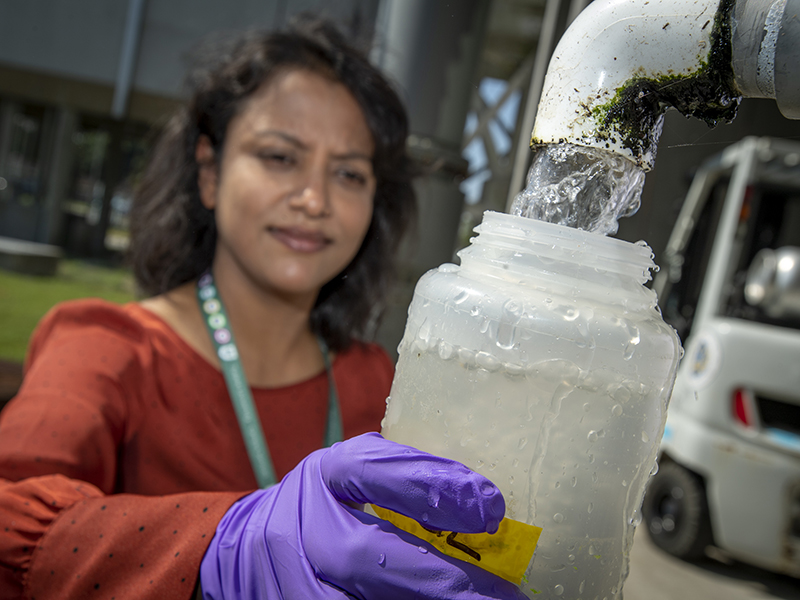Wastewater surveillance targets critical locations for COVID-19

(Pictured is alumna Shalina Shahin taking samples for previous research)
Samendra Sherchan, PhD, assistant professor in the School of Public Health and Tropical Medicine’s Department of Environmental Health Sciences, is counting manholes and collecting wastewater—lots of it, a little bit at a time. It’s part of his efforts to monitor the presence of COVID-19 in wastewater.
Environmental surveillance, which is the collection and analysis of wastewater to monitor community health issues, has found an important role in the COVID-19 pandemic: that of early warning system for outbreaks. Environmental microbiologists globally have been sampling wastewater in sewers and at wastewater treatment plants and looking for SARS CoV-2 RNA, which is shed in fecal matter, but Dr. Sherchan is also focusing on the science behind the science.
“A lot of research labs are collecting wastewater from treatment plants. But the RNA might degrade by the time it gets to the treatment plants, so we need to have some other ideas or research on where to sample, critical locations before it gets to the treatment plant,” he says. Thanks to an NIH grant, Dr. Sherchan and a team from the University of Arizona, where he earned his doctorate in soil, water, and environmental science, have been testing how long the virus is able to persist in wastewater. Among other things, that has meant tracing the sewer system.
“We are trying to identify critical manholes in different cities for optimizing sample collection,” he says, noting that in New Orleans alone there are some 20,000 manholes. Those deemed “critical” are in areas with a high potential viral RNA load, and most likely to be located near high-risk areas of transmission such as nursing homes or prisons where people are at increased risk for severe illness. “Modelers can help to transform that concentration of the virus in wastewater and then back calculate the number of infections or infected individuals in the community to utilize it as an early warning system,” Dr. Sherchan says.
Spearheading the wastewater surveillance work in Louisiana has Dr. Sherchan and his team regularly visiting sites such as the Orleans Parish Prison to collect samples. In addition to the University of Arizona collaboration, they’ve also been to Florida, which experienced a midsummer spike, with targeted collections at Disney World and the NBA Bubble – or isolation zone – in Orlando.
“Collaboration is key,” Dr. Sherchan says. “The idea now is to work together and help mitigate and control COVID-19.”
